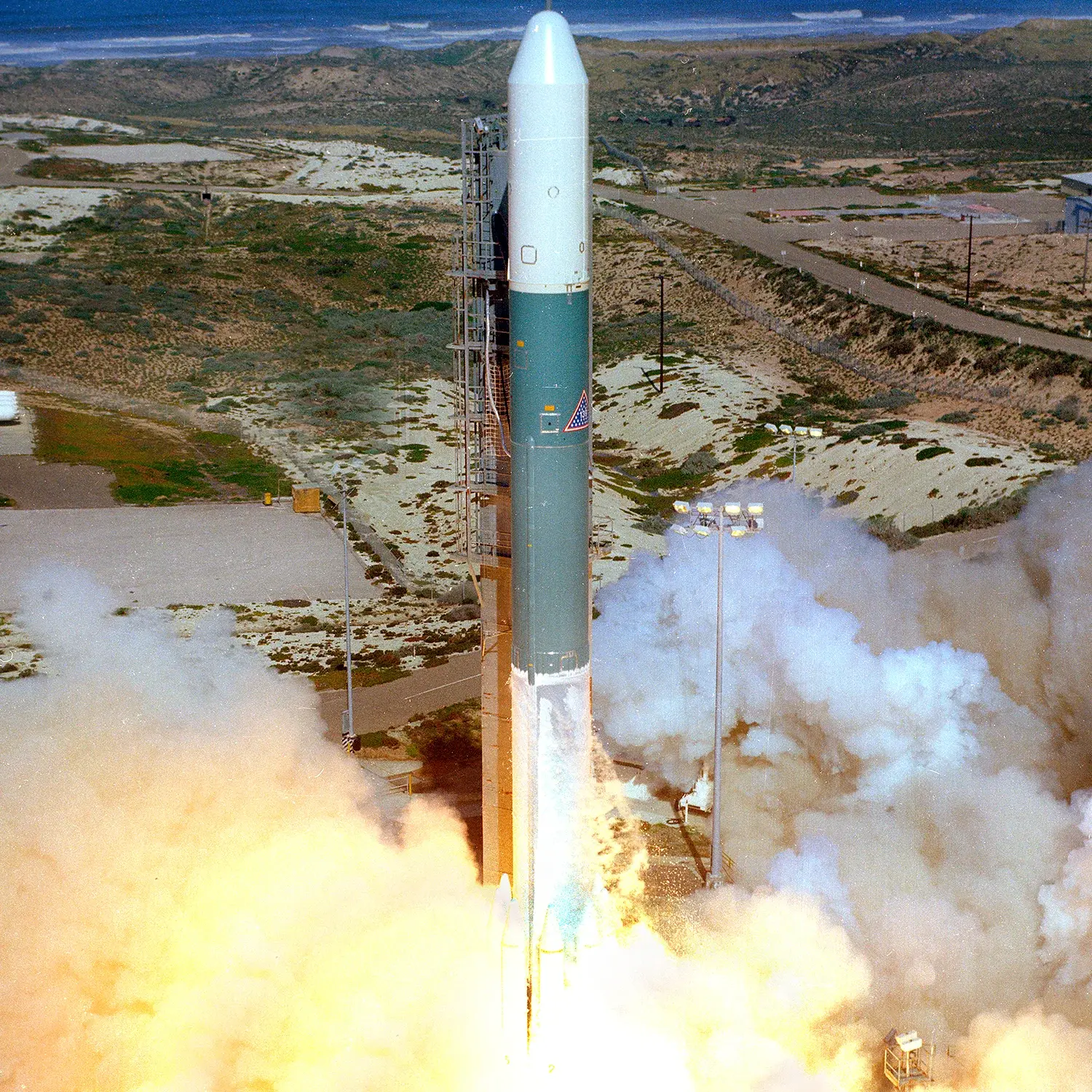Explorer 54 (AE-D)
Launch Success
Liftoff Time (GMT)
09:00:50
Monday October 6, 1975
Mission Details
Explorer 54 (AE-D)
The purpose of the AE-D mission was to continue the investigation begun by AE-C of the chemical processes and energy transfer mechanisms that control the structure and behavior of the earth's atmosphere and ionosphere in the region of high absorption of solar energy. This mission was planned to sample the high latitude regions at the same time that the AE-E mission was sampling the equatorial and low latitude regions. The same type of spacecraft as AE-C was used, and the payload consisted of the same types of instruments except for deletion of the extreme solar UV monitor and the Bennett ion mass spectrometer, which were part of the AE-E payload. The polar orbit provided the sampling of all latitudes and the perigee moved through all latitudes in 3 months and all local times in 4 months. Unfortunately, a failure in the solar power panels resulted in the termination of operations on January 29, 1976, after slightly less than 4 months of useful life. However, all the regions at the perigee altitudes were sampled during this time. The spacecraft re-entered the atmosphere about 1 month after cessation of telemetry. To continue the correlated observations with the AE-E mission, AE-C was reactivated on February 28, 1976, to replace AE-D.
Elliptical
1 Payload
681 kilograms
Rocket

Launch Site
Stats
Delta 2000 Series
14th
Mission
7th
Mission of 1975
1975
100th
Orbital launch attempt
